Edited by Doctor Andrea Bondanini
Sensitivity exercises
Fundamental in swimming is the search for sensitivity and acquaticity with water. It improves with training, with being in the water and with specific exercises such as the following:
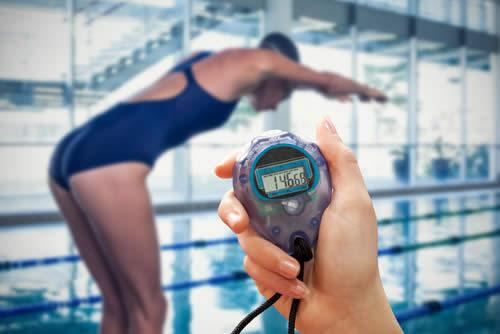 21 ) Swim with legs, but without the board, keeping the body position horizontal and arms straight forward; the hands move little and perform small circular, undulating movements, aimed at taking more water, seeking it, without ever going empty; hands have to run a kind of small ∞ Such sensitivity exercises are called rowing.
21 ) Swim with legs, but without the board, keeping the body position horizontal and arms straight forward; the hands move little and perform small circular, undulating movements, aimed at taking more water, seeking it, without ever going empty; hands have to run a kind of small ∞ Such sensitivity exercises are called rowing.
22 ) The same exercise as before but with the arms no longer stretched forward, but slightly bent downwards and closer to the pelvis.
23 ) Always the same exercise above with the last change completing the set: the arms are almost completely back and bent as little as possible. This exercise completes the series from 21 to 23, which if performed one after the other form the stroke in its underwater phase.
24 ) All three exercises 21, 22, 23 can also be done on the back.
I have underlined the word search for water, since this is the fundamental concept of sensitivity: the swimmer must immediately get used to swimming looking for water, taking it, almost as if it were something solid. In style swimming, for example, you really have to pretend to pull the water, as if you were clinging to a handle and pushing yourself forward thanks to that grip. Here lies the whole concept of sensitivity.
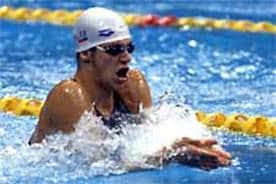 25 ) Swim like a dog, both on the stomach and on the back; you have to move your hands like a "mill" taking water, keeping the elbows as still as possible and moving only the forearm.
25 ) Swim like a dog, both on the stomach and on the back; you have to move your hands like a "mill" taking water, keeping the elbows as still as possible and moving only the forearm.
26 ) Dolphin leg kick under the water, with your arms at your sides. Always direct your gaze towards the back, if you look forward your pelvis will not allow you to make a vigorous kick.
27 ) belly down, row your arms simulating a style half stroke, never letting your arms come out of the water.
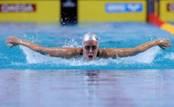 28 ) Put yourself in the same position as in exercise 1, but upside down, that is, with the head instead of the feet and vice versa, then moving forward with the feet first.
28 ) Put yourself in the same position as in exercise 1, but upside down, that is, with the head instead of the feet and vice versa, then moving forward with the feet first.
29 ) Get into a sitting position with your head out and your legs straight, thus forming a 90 ° angle: row with your arms simulating a style half stroke, without ever letting your arms come out of the water.
30 ) Get into a sitting position with your head out and your legs straight, thus forming a 90 ° angle: row your arms simulating a breaststroke stroke.
31 ) Position yourself in a supine position (belly up), arms up in the water very straight; move forward with your hands that move little and perform small circular, undulating movements, aimed at taking more water, with your feet in front; you will then leave pushing with the arms and touching upon arrival with the feet.
32 ) Still in the supine position, keep your arms extended down, hands extended at your sides: row by moving only your wrists, and your arms slightly below your pelvis.
All the previous exercises can be performed with the pull-buoy, or with the paddles, or with both.
The various paddles and, more generally, all the techniques and sensitivity exercises, must be performed with different hand positions: clenched into a fist, with the fingers open, together, with the thumb out or united.
Technique exercises:
To improve your swimming technique, analyzing every movement of the swims.
33 ) The first exercise, simpler to improve your technique, is knowing how to swim slowly: the more you can do it, the more sensitive you are to the water; all exercises should be done slowly.
34 ) swim each of the one-armed styles; the stationary limb can be positioned along the hips or at the top.
35 ) slide on the surface with arms stretched upwards with a kick of the legs.
36 ) slide with outstretched arms at the bottom with a leg kick.
37 ) swim with apnea of about 7-10 seconds, without breathing.
38 ) frog style: style arms and frog legs; or the other way around, frog arms and style legs.
39 ) Dolphin-style arms and legs, or conversely, dolphin-style legs
40 ) swim by inserting the anticipated breathing, delayed average with respect to the stroke.
41 ) breathe every 2,3,4,5, strokes, or every 3,5,7,9 strokes.
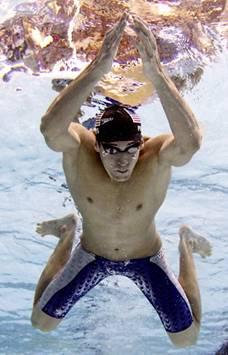 42 ) breathing with exhalations from the nose, from the mouth, from both.
42 ) breathing with exhalations from the nose, from the mouth, from both.
43 ) alternating style, pausing short as the arms meet in front.
44 ) Swim in style by touching the shoulder with the arm.
45 ) Swim in style by sliding your hands over the water.
46 ) breathing on the opposite side to that usually used.
47 ) swim alternating 5 strokes back and 5 strokes.
48 ) swimming with your hands in fists, or with your fingers open: very important exercise for sensitivity
49 ) swim with very short changes of pace (within 4-5 strokes)
50 ) swim in style or dolphin style with your head out.
51 ) swim breaststroke trying to breathe, then pull up your head only every 2 or 3 strokes; this only for 20-25 meters, then finish the normal pool.
52 ) Next free style: similar to the alternate style, but the arms must always be opposite each other; for example, when the right arm is forward, the left must be behind: at this moment, take a break.
53 ) Like the previous exercise; but during the break, the lower hand must touch the opposite side, passing behind the back, out of the water.
54 ) Double back with dolphin legs.
55 ) Frog-legged double back.
56 ) Double back to back legs, very continuous.
57 ) Style with outstretched arms.
58 ) Style with outstretched arm in the push and exit phase; but when the arm is perpendicular to the water, bend the elbow and enter the water with the hand. All very slowly.
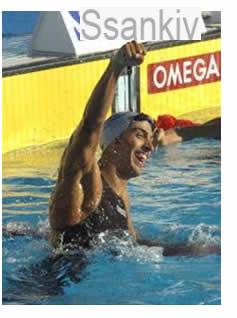 59 ) For the legs: swim with the big toes of the legs touching. This is because in the dolphin kick, back and style, the feet are slightly inwardly rotated for more thrusting effect.
59 ) For the legs: swim with the big toes of the legs touching. This is because in the dolphin kick, back and style, the feet are slightly inwardly rotated for more thrusting effect.
60 ) Perform all the proposed exercises with the following variations: with eyes closed, for short stretches; combine the various exercise proposals with each other; changes of pace; vary the times of exhalation; alternate full swim with exercise.
All these exercises, if performed slowly and correctly, will certainly be of great help to become more and more familiar with water, and to improve in stylistic technique, therefore also in performance.
Continues....
In the next article: other technique exercises for each level of swimmer, in progression. Suitable for any swimmer, from the one who has recently approached swimming, to the trainee who wants to improve, to the expert swimmer who wants to refine his swimming technique.
Other articles on 'Swimming Training Exercises'
- Exercises and swimming training
- Exercises for the development of strength in the water


























